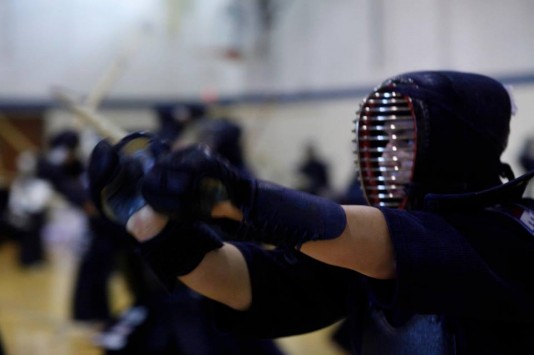Juniors practice intensive martial arts
November 13, 2013
You would not want to run into juniors Conner Barrett and Alistair Faghani in a dark alley. Their martial arts skills would have you headfirst in a trashcan before you could say the word, “Kendo.”
Faghani has practiced Kendo, a Japanese sport using bamboo swords and armor in a controlled environment, since he was five years old. Faghani’s dad became a serious Kendo practitioner, which influenced his interest in the martial art.
“I sort of grew up around Kendo,” Faghani said.
For the first seven years or so, Kendo can be very strenuous as your body adapts to the techniques of the sport, Faghani said. But since he’s crossed that difficult barrier, Kendo has become his favorite activity.
While Faghani scores points by hitting his opponent with a sword, Barrett renders his opponents harmless with the use of his bare hands.

Barrett mainly practices Krav Maga, a martial art developed by the Israeli Defense Forces, and is also learning Brazilian Jujitsu, a grappling martial art similar to wrestling, he said.
Barrett began taking Krav Maga lessons at the end of eighth grade, when he was inspired by superheroes in movies who could singlehandedly fight off evil.
“Batman made me want to do it,” Barrett said. “I’m not even kidding.”
But Barrett set his sights even higher than Batman. He said that Christian Bale uses the Keysi fighting method when playing Batman, which Barrett thinks is largely ineffective and showy, as opposed to the widely taught and practical art of Krav Maga.
Both Barrett and Faghani said that on a good week, they practice their respective martial arts for about eight hours, spread over four or five days.
Krav Maga, Kendo and Jujitsu classes all have similar structures, starting out with warm ups and skills training and then moving on to sparring or practice fights.
Faghani is at the highest level possible for his age, which is a second-degree black belt. His father is a sixth degree black belt, the highest possible being an eighth degree.
The system works differently for Barrett in Krav Maga.
“There is a level system, but once you get past level one, it doesn’t really mean a lot,” he said. “I’m past level one, and I’m learning aspects of every level above.”
While Barrett claims he’s one of the youngest at his studio learning Krav Maga, Faghani said that Kendo is an art that people of all ages can practice, so he sees himself continuing far into the future.
“The U.S. kendo national team is trying to reach out to younger kenshi [kendo practitioners,]” he said.
Faghani will be attending Team U.S.A. trainings in California every four or five months.
Barrett sees himself continuing Krav Maga throughout high school, and continuing Jujitsu for a while afterwards, but there are no national tournaments or competitions in which he could compete.
“I just [wanted] to learn how to beat up bad guys and be a super hero, like any middle schooler would,” Barrett said.








